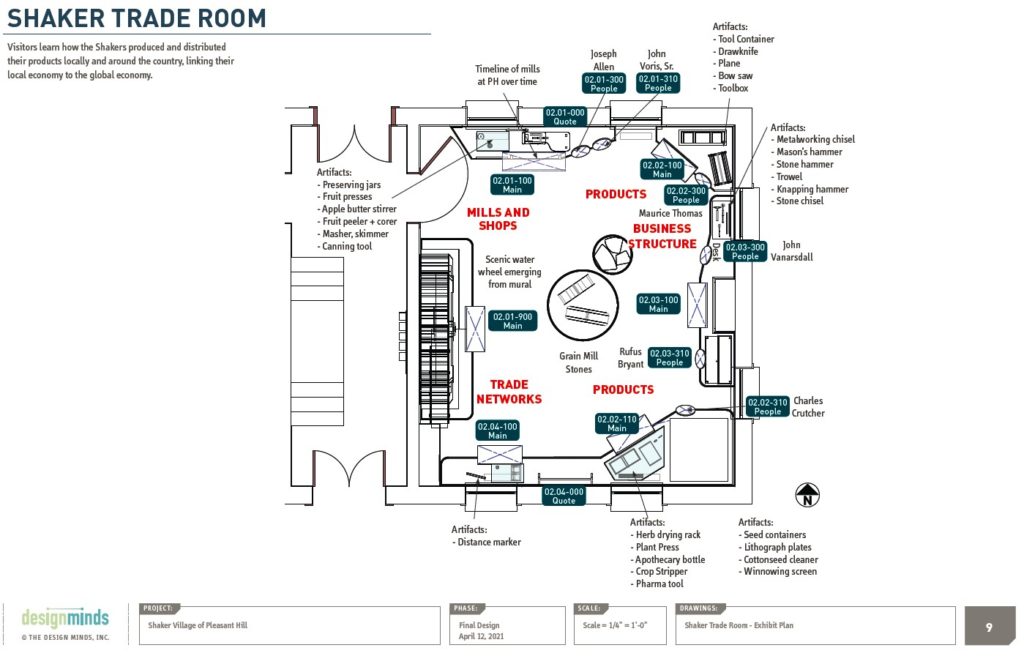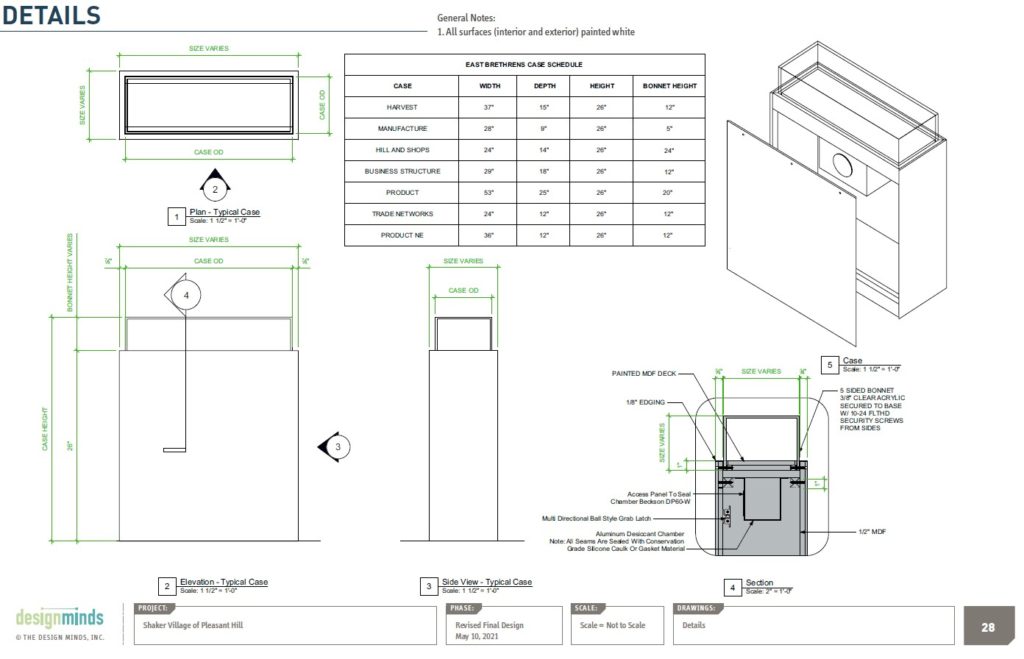Billy Rankin, Vice President of Public Programming and Marketing
Telling the Story
Among the list of 34 projects that has been curated for Shaker Village’s Long-Range Plan, you will find several projects that are not new ideas, but have actually been underway for some time. Historic preservation, for example, is a never-ending project at Kentucky’s largest National Historic Landmark. So too is the implementation of interpretation to share the history of this remarkable site with our guests.
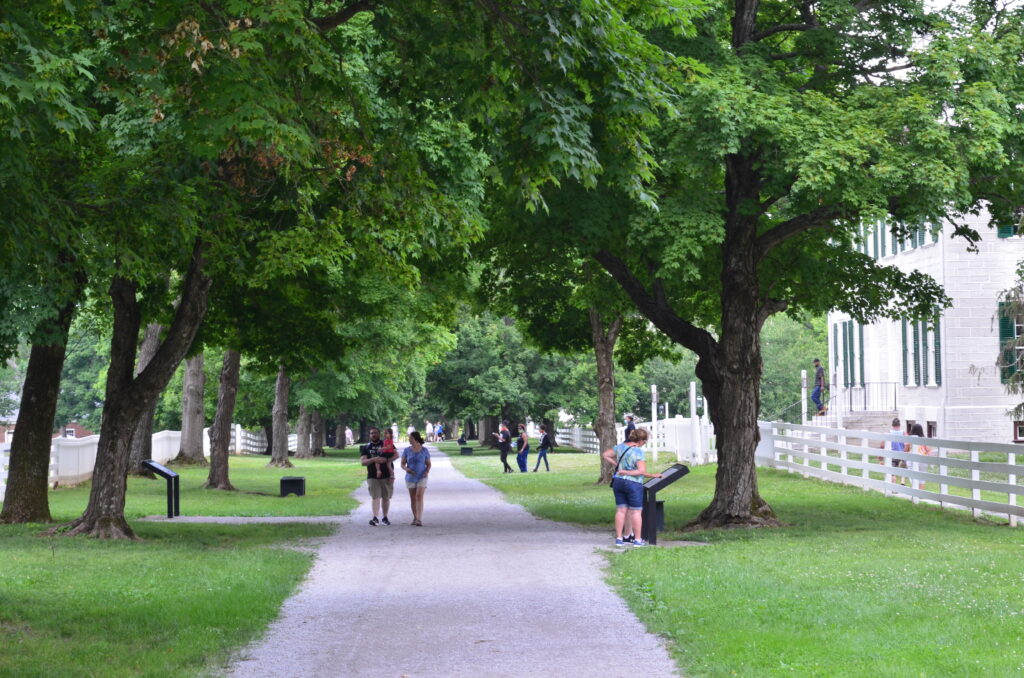
Since 2017, Shaker Village has been implementing components of a “new” interpretive model. We understand that our guests are not all identical, and that people learn and interact in many different ways. With this in mind, we interpret the natural and cultural history of Pleasant Hill through a variety of methods, including: guided tours, signs, exhibits, workshops, interactive apps, books, web pages, events and hands-on learning experiences.
Among our different methods, educational exhibits provide a solid interpretive foundation for the greatest number of visitors to the Village.
Exhibits allow guests to learn at their own pace, and to pursue topics that are of the greatest personal interest. Exhibits connect visitors to the material culture of the Shakers. Exhibits immerse guests in the time, the place and the story of Pleasant Hill.
You can currently explore exhibits in 12 different historic buildings throughout the Village, and one of these spaces is about to go through a massive transformation.
The Spiritual Center
In 2018, thanks to funding provided by the Eli Lilly Endowment, preservation of the 1820 Meeting House was completed. This project, along with the simultaneous preservation of the 1824 Centre Family Dwelling, marked the largest investment in historic preservation at Pleasant Hill since the original restoration in the 1960s and 1970s.
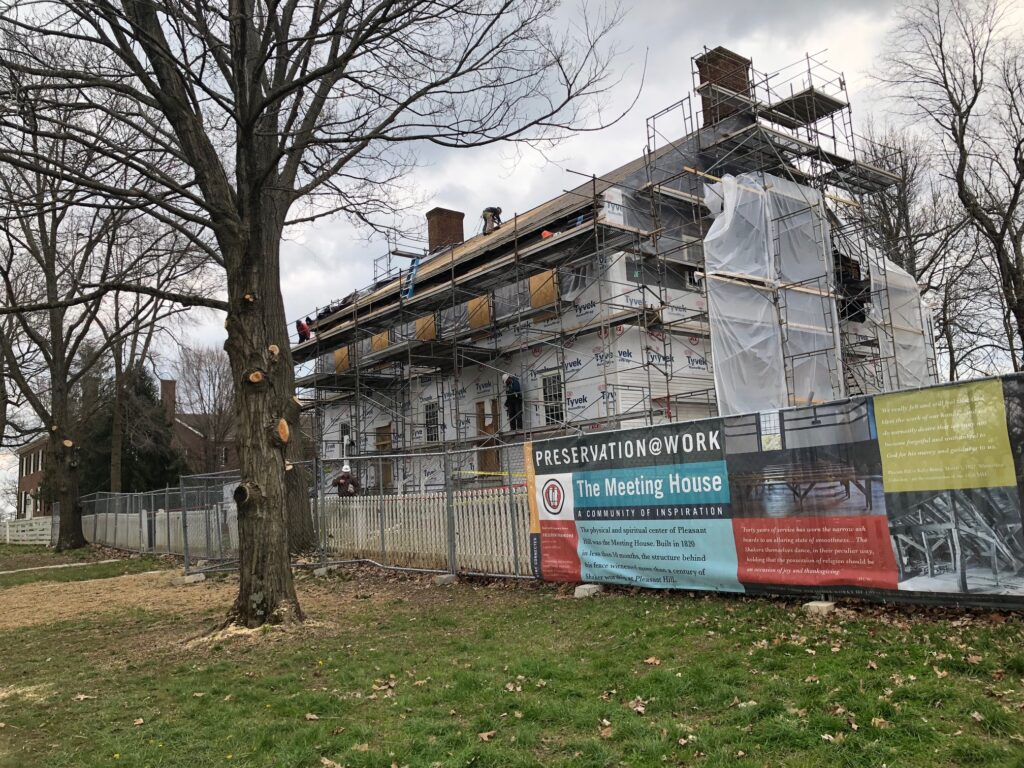
The work not only protected these structures, but also created opportunity for the future installation of high-quality, educational exhibitions in both buildings. Lighting systems, climate control and UV protection were all new features that expanded the potential for interpretive storytelling through compelling exhibits.
Since 2018 our team has completed new exhibits in several buildings, added outdoor interpretive signs, and launched the Shaker Village App, but had not, until recently, secured funding to complete exhibitions in the 1820 Meeting House. Fortunately, the Eli Lilly Endowment once again partnered with Shaker Village to protect and share the “spiritual center” of the community. In late 2022 a grant of $275,000 was awarded for The Believers, a permanent exhibit that will explore the Shakers’ faith, and how they expressed that faith in their music, worship and everyday lives.
Exhibit Design
The Believers will inhabit eight rooms on the second floor of the Meeting House. The six largest rooms will house exhibits on the Origins of the Shaker Faith, Theology, Worship, Music, the Era of Manifestations and Construction of the Meeting House. Two smaller rooms will be “reflection stations,” each having prompts for the consideration of guests, with the opportunity to respond and interact with the space in interesting ways.
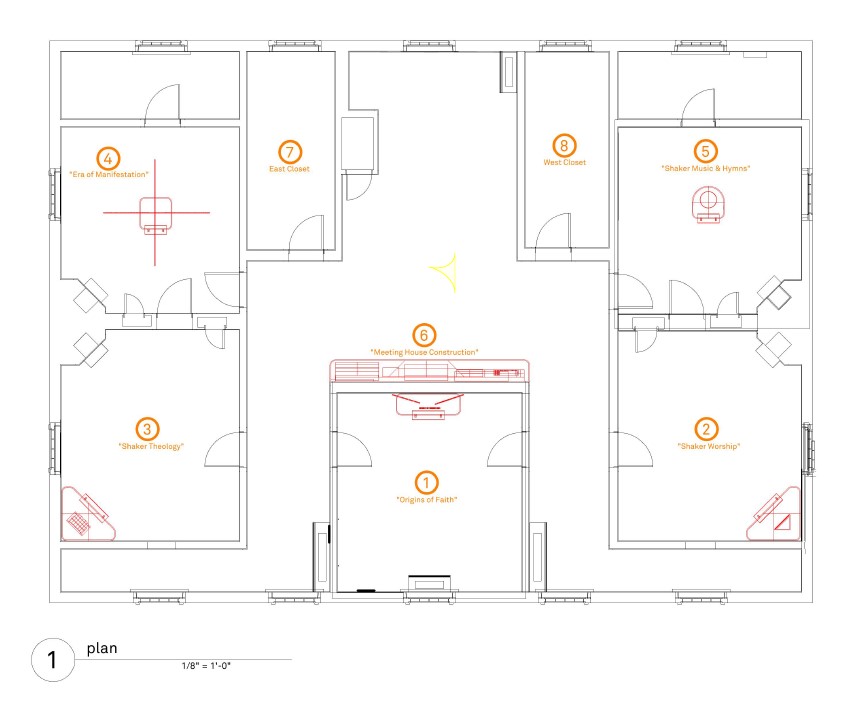
At the core of Shaker Village’s interpretive plan is a key question. The Pleasant Hill Shakers’ beliefs influenced their actions and defined their lives. How do your beliefs define you? By sharing the story of the Shakers, we hope that our guests will reflect on their own beliefs, and how beliefs, manifested in religion, philosophy or morality, shape the world around us.

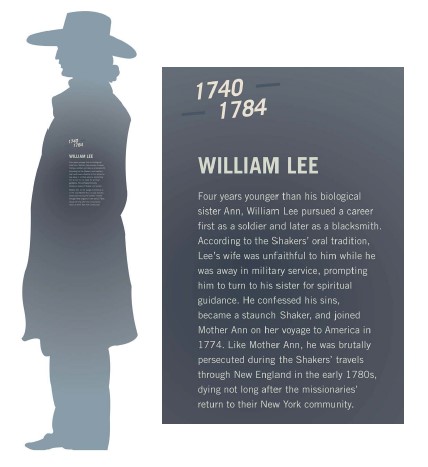
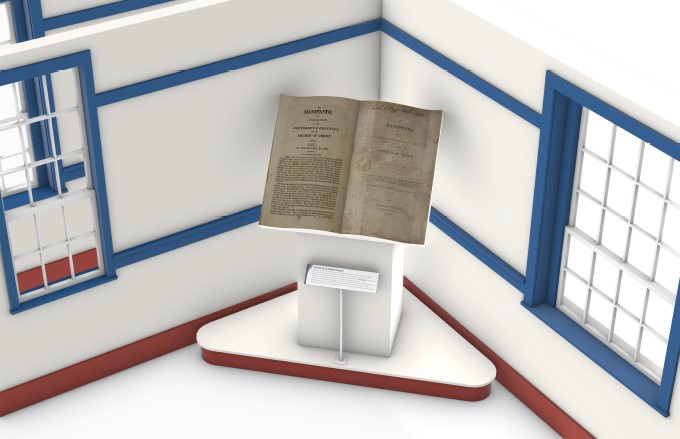
To advance this goal, The Believers has been designed as a space of inspiration and contemplation. Art, music and dance are key components. Sculptural elements help to drive the experience just as much as historic content. We want this exhibit to be emotive. We want visitors to feel something.
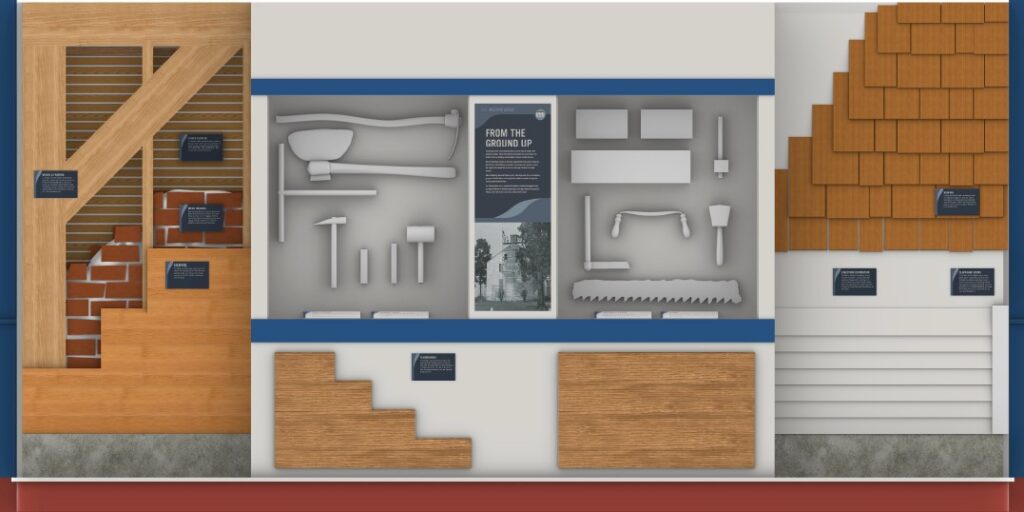
The Believers will open in late September (keep following our weekly emails for your invitation.) After it has opened, permanent exhibitions will still be needed for the 1824 Centre Family Dwelling, 1809 Farm Deacon’s Shop, 1817 Cooper’s Shop and 1835 East Family Wash House. Until then, seasonal and temporary exhibits will fill those spaces while fundraising continues toward the master plan. We hope you will join us for each new addition along the way, as we continue to explore the history of the Shakers and Pleasant Hill!
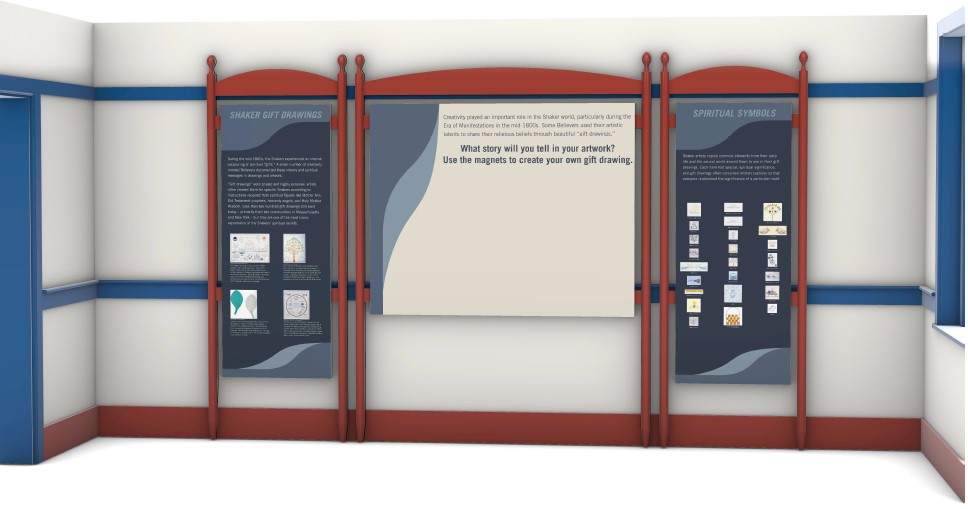
Follow Our Progress
As projects develop, you can expect to hear more about the progress on social media, through emails and on the Shaker Village blog. We hope you follow along!
If you have questions about master site planning at Shaker Village, or if you would like to support our efforts, please reach out to our Vice President of Public Programming & Marketing, Billy Rankin at [email protected] or 859.734.1574.
This is the ninth article in an ongoing series outlining long-range planning at Shaker Village of Pleasant Hill. New to the series? You can visit our previous articles here:
- Preserving the Past, Planning for the Future – An overview of Shaker Village’s long-range planning process
- Pieces of a Puzzle – An introduction to the list of projects included in the long-range plan
- Landing in the Right Place – A new vision for Shaker Landing
- The Power of Play – The addition of a children’s playscape
- A House of Dignity and Charm – Expanding the impact of the 1839 Trustees’ Office
- A Lot to Live Up To – Developing the 1850 West Lot Wash House into an overnight suite
- The Natural Element – Planning the addition of a nature center
- True North – New life for the 1826 North Lot Dwelling
